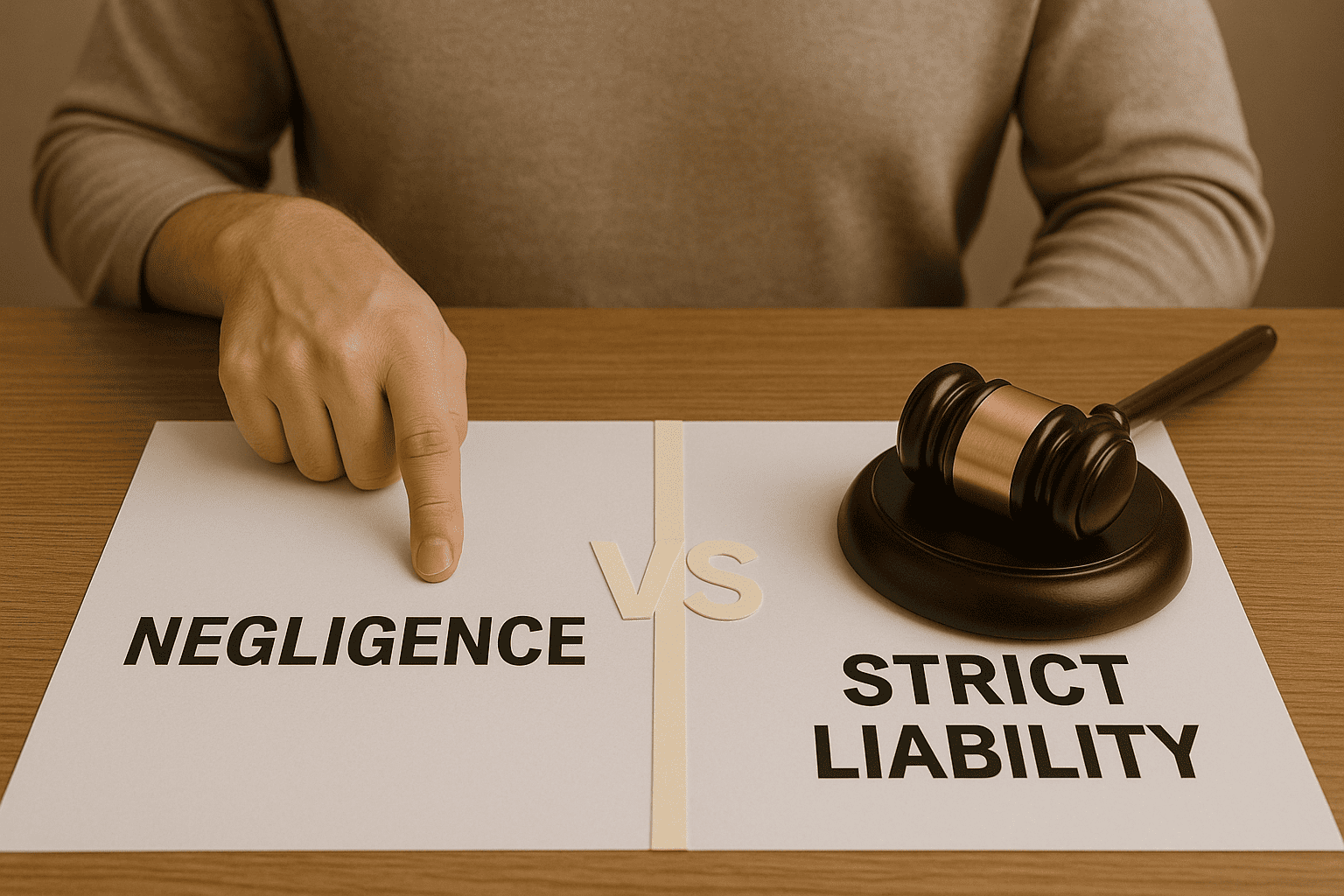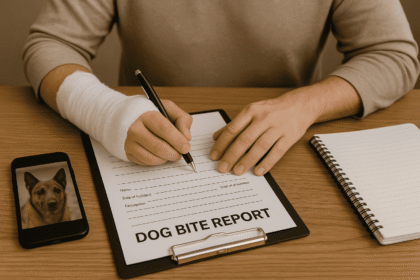When you start researching dog bite laws, you will quickly come across two legal terms that sound complicated but are essential to understand: “Strict Liability” and “Negligence”.
These two concepts are the legal foundations that determine whether a dog owner is responsible for the injuries their dog has caused. The rules are different from state to state, and knowing which one applies to you is critical. In this guide, we’ll break down the difference in simple, everyday language.
Strict Liability: The Modern and More Direct Rule
Think of “strict liability” as the “no excuses” rule.
- What it means: In states with strict liability laws, a dog owner is held legally responsible for the harm their dog causes, even if they had no prior warning or reason to believe their dog might be dangerous. The dog’s history doesn’t matter.
- What you have to prove: As the victim, you typically only need to prove three basic things:
- The dog bite caused your injury.
- You were on public property or lawfully on private property at the time of the bite.
- The person you are making a claim against is, in fact, the dog’s owner.
You do not have to prove that the owner was careless or that the dog had a history of aggression.
- Example: You are invited to a neighbor’s barbecue. Their friendly, well-behaved dog, which has never hurt anyone, suddenly bites you. In a strict liability state like California or Florida, your neighbor is generally responsible for your medical bills and other damages simply because they own the dog that caused the harm.
Negligence (or The “One-Bite Rule”): The Traditional Rule
This is the older legal standard, and it requires more from the victim to prove their case. It’s often called the “one-bite rule” because it implies an owner might not be liable for the first time their dog bites.
- What it means: In these states, the owner is only held responsible if they were negligent. This means you have to show that the owner knew or reasonably should have known that their dog had dangerous tendencies, but they failed to take reasonable steps to control their dog and prevent the attack.
- What you have to prove: You must provide evidence that the owner was careless. This could include showing that:
- The dog had bitten someone before.
- The dog frequently acted aggressively (growling, lunging, snapping).
- The owner violated a local leash law, which is often considered automatic evidence of negligence (“negligence per se”).
- Example: Let’s use the same barbecue scenario. If the bite happens in a “one-bite rule” state like Texas or New York, you would need more evidence. If the dog had a perfectly clean record, it would be difficult to hold the owner liable. However, if you could find another neighbor who testifies, “Oh, that dog tried to bite my son last summer,” you would have strong evidence that the owner knew their dog was dangerous and was therefore negligent for not controlling it.
Why Does This Difference Matter So Much?
The rule your state follows dramatically changes the focus of your case.
- In a Strict Liability state, the focus is on the fact of the injury.
- In a Negligence state, the focus is on the owner’s prior knowledge and carelessness.
A Final Thought:
Understanding this fundamental difference is the key to knowing what you need to focus on when documenting your case and speaking with insurance companies. To find out which rule applies where you live, please visit our comprehensive State Laws guides.
Disclaimer: This article is for informational purposes only. The application of these legal principles can be complex. Always consult with a qualified attorney to understand the specific laws in your state and how they apply to your case.





